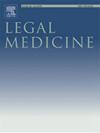组织学洞察格林-巴利综合征的不典型偶然存在的Marinesco体和淀粉体致命病例:尸检病例报告
IF 1.3
4区 医学
Q3 MEDICINE, LEGAL
引用次数: 0
摘要
格林-巴利综合征(GBS)是一种炎症性脱髓鞘性多神经病变,临床表现为上升性运动麻痹、自主神经功能障碍、呼吸衰竭等。虽然通常预后良好,但少数病例可能会致命。在尸检中,大体发现是非特异性的。因此,尸检诊断是基于临床表现和组织病理学检查。我们报告了一例GBS的尸检病例,该病例显示了不寻常的偶然神经退行性发现的显著诊断特征。43岁男性,表现为发热、呼吸道感染、感觉异常、上肢和下肢运动无力。临床表现提示GBS伴自主神经系统受累;随后,患者发生麻痹性肠梗阻,治疗两周后因败血症死亡。死后检查发现胸腔积液、肺水肿及坏疽性回肠穿孔。脑和脑神经的组织病理学分析,使用不同的特殊染色和免疫组化,证实脱髓鞘,明显的髓磷脂和吞噬髓磷脂的巨噬细胞的损失。除了与GB综合征一致的变化外,本病例还注意到偶然发现的Marinesco体,这是神经退行性疾病的典型特征。淀粉体也见于大脑和脑神经的多个部分,这在老年人中很常见。gbs相关的自主神经异常,导致罕见的并发症,如麻痹性肠梗阻,在本病例中被证明是致命的。这个病例给出了各种组织病理学结果的说明,有助于诊断和确认GBS。它还讨论了偶然的神经退行性改变,这是不典型的年龄和不寻常的神经炎症病例,如GBS。本文章由计算机程序翻译,如有差异,请以英文原文为准。
Histological insight into the fatal case of Guillain-Barre syndrome with atypical incidental presence of Marinesco bodies and corpora amylacea: an autopsy case report
Guillain-Barre syndrome (GBS) is an inflammatory demyelinating polyneuropathy clinically characterized by ascending motor paralysis, autonomic dysfunction, and respiratory failure etc. Though generally associated with a good prognosis, a few cases may turn fatal. On autopsy, gross findings are nonspecific. Hence, autopsy diagnosis is based on clinical manifestations and histopathological examination. We report an autopsy case of GBS, which showed remarkable diagnostic features of unusual incidental neurodegenerative findings atypical for that age. A 43-year-old male presented with fever, respiratory infection, paraesthesia, and motor weakness in both upper and lower limbs. The clinical features were suggestive of GBS with autonomic system involvement; subsequently, the patient developed paralytic ileus and died due to septicemia after two weeks of treatment. Postmortem examination revealed pleural effusion, pulmonary edema, and gangrenous ileal perforation. Histopathological analysis of the brain and cranial nerves, using different special stains and IHC, confirmed demyelination, evident by loss of myelin and myelin-engulfing macrophages. In addition to changes consistent with GB syndrome, the incidental discovery of Marinesco bodies, which are typically found in neurodegenerative diseases, is noted in this case. Corpora amylacea was also reported in multiple sections of the brain and cranial nerves, which are frequent in the old age group. GBS-associated dysautonomia, leading to rare complications such as paralytic ileus, proved fatal in this case. This case gives an account of various histopathological findings that assist in the diagnosis and confirmation of GBS. It also discusses incidental neurodegenerative changes that are atypical for age and unusual in neuroinflammatory cases like GBS.
求助全文
通过发布文献求助,成功后即可免费获取论文全文。
去求助
来源期刊

Legal Medicine
Nursing-Issues, Ethics and Legal Aspects
CiteScore
2.80
自引率
6.70%
发文量
119
审稿时长
7.9 weeks
期刊介绍:
Legal Medicine provides an international forum for the publication of original articles, reviews and correspondence on subjects that cover practical and theoretical areas of interest relating to the wide range of legal medicine.
Subjects covered include forensic pathology, toxicology, odontology, anthropology, criminalistics, immunochemistry, hemogenetics and forensic aspects of biological science with emphasis on DNA analysis and molecular biology. Submissions dealing with medicolegal problems such as malpractice, insurance, child abuse or ethics in medical practice are also acceptable.
 求助内容:
求助内容: 应助结果提醒方式:
应助结果提醒方式:


